This article was medically reviewed by Shari Forschen, NP, MA. Shari Forschen is a Registered Nurse at Sanford Health in North Dakota. Shari has worked in healthcare since 1996 and her expertise lies in acute care bedside nursing on a medical oncology floor. She received her degree from Medcenter one College of Nursing in 2003 and her Family Nurse Practitioner Masters from the University of North Dakota in 2014. Shari is a member of the American Nurses Association.
There are 9 references cited in this article, which can be found at the bottom of the page.
wikiHow marks an article as reader-approved once it receives enough positive feedback. In this case, 94% of readers who voted found the article helpful, earning it our reader-approved status.
This article has been viewed 144,814 times.
A urinary tract infection (UTI) is caused by bacteria that infect the bladder and the urinary tract where urine is collected and stored. A UTI is an uncomfortable, painful condition that requires medical treatment. See your doctor right away if you suspect that you have a urinary tract infection. In addition to getting prompt medical treatment for a UTI, there are several things that you can do to make yourself more comfortable while you wait for the antibiotics to clear your infection.
Steps
Easing Pain and Discomfort
-
1Go to the bathroom when you feel the urge to go. When you have a urinary tract infection, you will often feel like you need to go to the bathroom. Do not ignore these feelings. Go to the bathroom right away and empty your bladder as much as you can. Doing so should help you to feel a little more comfortable when you are dealing with a UTI.[1]
-
2Take pyridium (phenazopyridine) to reduce the burning sensation when you urinate. This common over-the-counter medicine can help to relieve the burning pain that comes with urination when you have a UTI. Pyridium alkalinizes the urine to increase the pH of the urine so that the urine does not burn as much as it travels down the infected urethra.[2]
- Follow the instructions for how much to take and how often. A common dose is 200 mg three times daily. You will only need to take pyridium for two days until it begins to take effect.
- Do not take pyridium for more than two days without discussing it with your doctor.
- This medication should only be taken by adolescents 16 and older and adults.
- Keep in mind that this medication will cause your urine to turn bright orange. Some may also notice an orange tint to the eyes, and it may stain contact lenses.
- Pyridium may interfere with certain lab tests, so let the technician or doctor know you are taking it before giving a urine sample.[3]
Advertisement -
3Wear loose-fitting, cotton underwear and clothing. Wearing loose-fitting cotton underwear and clothing will make it less likely that moisture will get trapped in your underwear and make your infection worse. It will also make it easier for you to remove your pants and underwear if you have to go to the bathroom in a hurry. Furthermore, loose-fitting clothing will help you to feel more comfortable than wearing something tight.[4]
- Often times pelvic discomfort can occur with UTIs. Wearing nonrestrictive clothing will avoid excess pelvic pressure from occurring thus increasing comfort.
-
4Take an over-the-counter painkiller. Ask your doctor for recommendations on what to take and how much to help ease the pain that comes with a urinary tract infection. Tylenol (acetaminophen) and Motrin (ibuprofen) are good options.[5]
- Certain conditions make the use of over-the-counter painkillers unsafe (for instance, if you take blood thinners, then drugs like ibuprofen should be avoided). Talk to your doctor about other medications you are taking and conditions you might have.
- Read and follow the package instructions for any over-the-counter medicine that you decide to take.
- General recommendations for healthy adults is between 3,000 and 4,000 mg in 24 hours.
-
5Use a heating pad. A heating pad may help to reduce some of the pain and discomfort that you feel in your back and lower abdomen as a result of the urinary tract infection. Purchase an electric heating pad to apply to your lower back or abdomen for 10–15 minutes at a time.[6]
- Make sure that you take breaks from using the heating pad. After you use it for 10–15 minutes. Take it off for an hour.
- If you are using an electric heating pad, keep the heat set on low to avoid overheating.
- If you use the heating pad to relieve UTI pain at night, you'll need to turn it off before you go to sleep.
Using Home Remedies
-
1Drink adequate water. Drinking plenty of water when you have a UTI can help your body to flush out bacteria; however, you may want to consult your doctor about how much water you should drink each day. Drinking too much water can dilute any antibiotics that your doctor has prescribed.[7]
-
2Prepare a baking soda solution. Drinking a baking soda solution once per day may help to relieve the burning sensation that comes along with a UTI. Mix 1 tsp of baking soda into an 8 oz glass of water until the baking soda has dissolved. Then drink the whole glass. This solution will alkalinize the urine and decrease the pain as the urine passes.[8]
- You may want to skip this treatment if you are on a low-sodium diet because baking soda has a high sodium content.
-
3Steer clear of bladder irritants. While you are dealing with a UTI, avoid certain foods and drinks that may cause spasms of the bladder. Pass on coffee, alcohol, chocolate, and soft drinks that have caffeine and/or citrus flavors while you have a UTI. These foods and beverages may make your UTI worse.[9]
-
4Sip some ginger tea. Ginger tea has anti-inflammatory properties and it may help to reduce some of the pain and discomfort caused by a urinary tract infection. Ginger inhibits prostaglandin release in much the same way as NSAIDs.
- You can buy ginger tea in the store or just pour a cup of boiling water over a few pieces of crushed ginger in a mug.
-
5Use horseradish as a food garnish. Horseradish may help to kill the bacteria that cause a UTI. Add about a ½ teaspoon of freshly grated horseradish to food as a garnish or create a horseradish solution to drink. To create a solution, mix ½ teaspoon of grated horseradish with water.[10]
- Eat or drink the horseradish, but be ready with a glass of milk to follow it up. Horseradish is very hot and you may need some milk to counter the sensation of heat.
-
6Mix cream of tartar with warm water and lemon juice. A mixture of cream of tartar, warm water, and lemon juice also has bactericidal properties. Mix 1 ½ teaspoon of cream of tartar with about one cup of warm water. Then, add a squeeze of lemon juice to the mixture. Drink the whole solution one to two times per day.[11]
Getting Medical Attention
-
1Call your doctor if you have symptoms of a urinary tract infection. If you suspect that you have a urinary tract infection, call your doctor right away. Don't ignore it — if left untreated, the infection can spread to the blood stream, which can develop into a more serious potentially life-threatening situation. Your doctor will need to get a urine sample and perform a culture to be certain that it is a UTI and not something else. Some common symptoms of a UTI include:[12]
- Feeling a burning sensation when you go to the bathroom
- Having the urge to urinate often, even if little or nothing comes out
- Feeling pain or pressure in your back and/or lower abdomen
- Producing cloudy, dark, bloody, and/or strange-smelling urine
- Feeling tired and/or shaky
- Having a fever and/or chills
- Confusion (in older adults)
-
2Follow your doctor’s instructions for care. If your doctor diagnoses you with a urinary tract infection, then you will need to follow your doctor’s treatment plan to ensure a quick and full recovery. Your doctor may prescribe antibiotics, recommend a certain fluid intake, or advise against certain activities.[13]
-
3Notify your doctor if your symptoms return or worsen. In some cases, a UTI may not respond to treatment and may require a more aggressive treatment or even hospitalization. Some people are more susceptible to UTIs and may get one after another. Let your doctor know right away if your symptoms do not improve or if they get worse.[14]
Warnings
- Your antibiotics may help your UTI feel better after one to three days. Do not stop taking the medicine just because you feel better; your UTI bacteria hasn't vanished completely. Always finish your entire course of antibiotics or the bacteria may become resistant to the antibiotics and become difficult to treat.⧼thumbs_response⧽
- Do not self-prescribe under any circumstances. There is a reason why certain drugs are administered to someone and why certain ones are not.⧼thumbs_response⧽
- Your UTI may feel better with the antibiotics but after you stop, it may start up again. Speak with your doctor if this occurs — you may need additional antibiotic treatment or different antibiotic that can eradicate the bacteria from the system. There may also be a potential issue with your kidneys, so it's important to follow up.⧼thumbs_response⧽
References
- ↑ https://familydoctor.org/condition/urinary-tract-infections/
- ↑ https://www.uofmhealth.org/health-library/d00337a1
- ↑ https://www.uofmhealth.org/health-library/d00337a1
- ↑ https://medlineplus.gov/ency/article/000505.htm
- ↑ https://www.nhs.uk/conditions/urinary-tract-infections-utis/
- ↑ https://myhealth.alberta.ca/health/AfterCareInformation/pages/conditions.aspx?hwid=uh5234&
- ↑ https://myhealth.alberta.ca/health/AfterCareInformation/pages/conditions.aspx?hwid=uh5234&
- ↑ https://www.betterhealth.vic.gov.au/health/conditionsandtreatments/cystitis
- ↑ https://myhealth.alberta.ca/health/AfterCareInformation/pages/conditions.aspx?hwid=uh5234&
-Step-1-Version-2.webp)
-Step-2-Version-2.webp)
-Step-3-Version-2.webp)
-Step-4-Version-2.webp)
-Step-5-Version-2.webp)
-Step-6-Version-2.webp)
-Step-7.webp)
-Step-8.webp)
-Step-9.webp)
-Step-10.webp)
-Step-11.webp)
-Step-12.webp)
-Step-13.webp)
-Step-14.webp)




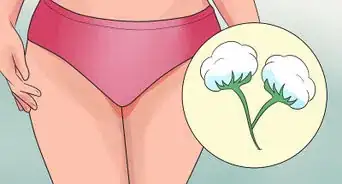

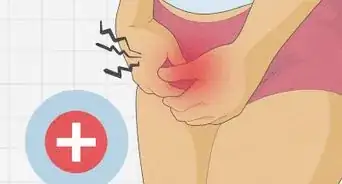


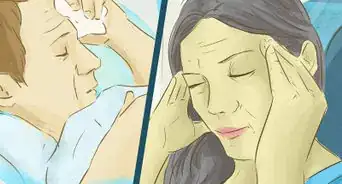
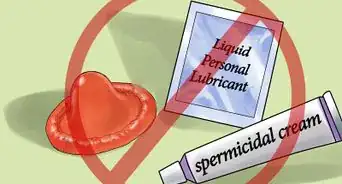
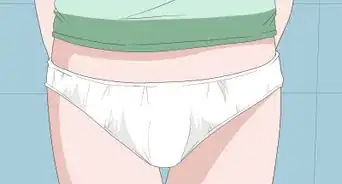

















































Medical Disclaimer
The content of this article is not intended to be a substitute for professional medical advice, examination, diagnosis, or treatment. You should always contact your doctor or other qualified healthcare professional before starting, changing, or stopping any kind of health treatment.
Read More...